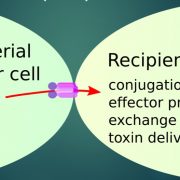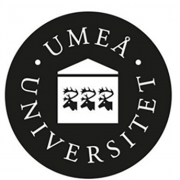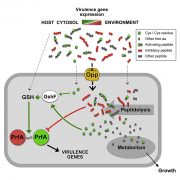Postdoctoral fellowships available in the Berntsson lab
The Berntsson lab at the department of Medical Biochemistry and Biophysics at Umeå University, Sweden, is looking to recruit up to two postdoctoral fellows (2-year fellowships, funded by the Kempe Foundation) to study the structural and functional aspects of Type 4 Secretion Systems. These large protein complexes are responsible for horizontal gene transfer between bacteria. As such, they facilitate the spread of, among other genes, antibiotic resistance between bacteria, both intra- and interspecies.
The overall goals of these projects are to structurally and functionally characterize the DNA processing proteins of G+ Type 4 Secretion Systems. Parts of this project, for work on the T4SS from the pCF10 plasmid from Enterococcus faecalis, has already been started in the lab, but we are now also planning on expanding to other model systems. The projects will involve molecular biology, biochemistry and structural biology techniques, with an early emphasis on the functional characterization of these proteins and their complexes, followed by structural determination.
Qualifications
The applicants must possess a PhD, or another diploma deemed equivalent to a PhD, within molecular biology, biochemistry, structural biology or a related field. Furthermore, the applicant must have practical experience and expertise of cloning and protein production and purification in bacteria. The applicant should preferably be experienced with functional studies of (membrane) proteins using various molecular biology and biochemical methods, such as ITC, SPR and fluorescence spectroscopy. Previous experience of working with gram-positive bacteria and membrane proteins is an advantage, as is previous experience of X-ray crystallography and electron microscopy. The applicants must have a very good level of English, both written and spoken. The applicants are also expected to be good team players, but should also be able to work independently.
Application
The application should consist of the following:
- A motivation letter (max 1 A4), where you highlight why you want to join the lab and study T4SSs. This letter must also include your contact information.
- The Curriculum Vitae of the applicant, including a list of published peer-reviewed articles.
- Copies of the PhD diploma (or equivalent).
- Contact details for three references, of which one should be your PhD supervisor.
The Berntsson lab is part of the Integrated Structural Biology community at Umeå University, consisting of 14 research groups that use, and have access to, high-field NMR, X-ray crystallography (including regular synchrotron access), world-class cryoEM and computation biology with a high performance computing centre.
The duration of the fellowship is 2 years. Your application should be written in English and prepared as a single package in PDF format, to be submitted to ronnie.berntsson@umu.se. Make sure to use the subject line: “postdoc application 2019-04” in the application email. Submit the application on April 25, 2019 at the latest. The top ranked candidates will be contacted within three weeks from the closing date for an interview. Starting date according to agreement. For more information about the research or other details, do not hesitate to contact Ronnie Berntsson.
Email: ronnie.berntsson@umu.seWebpage: https://www.biostruct.umu.se/principal-investigators/ronnie-berntsson/





